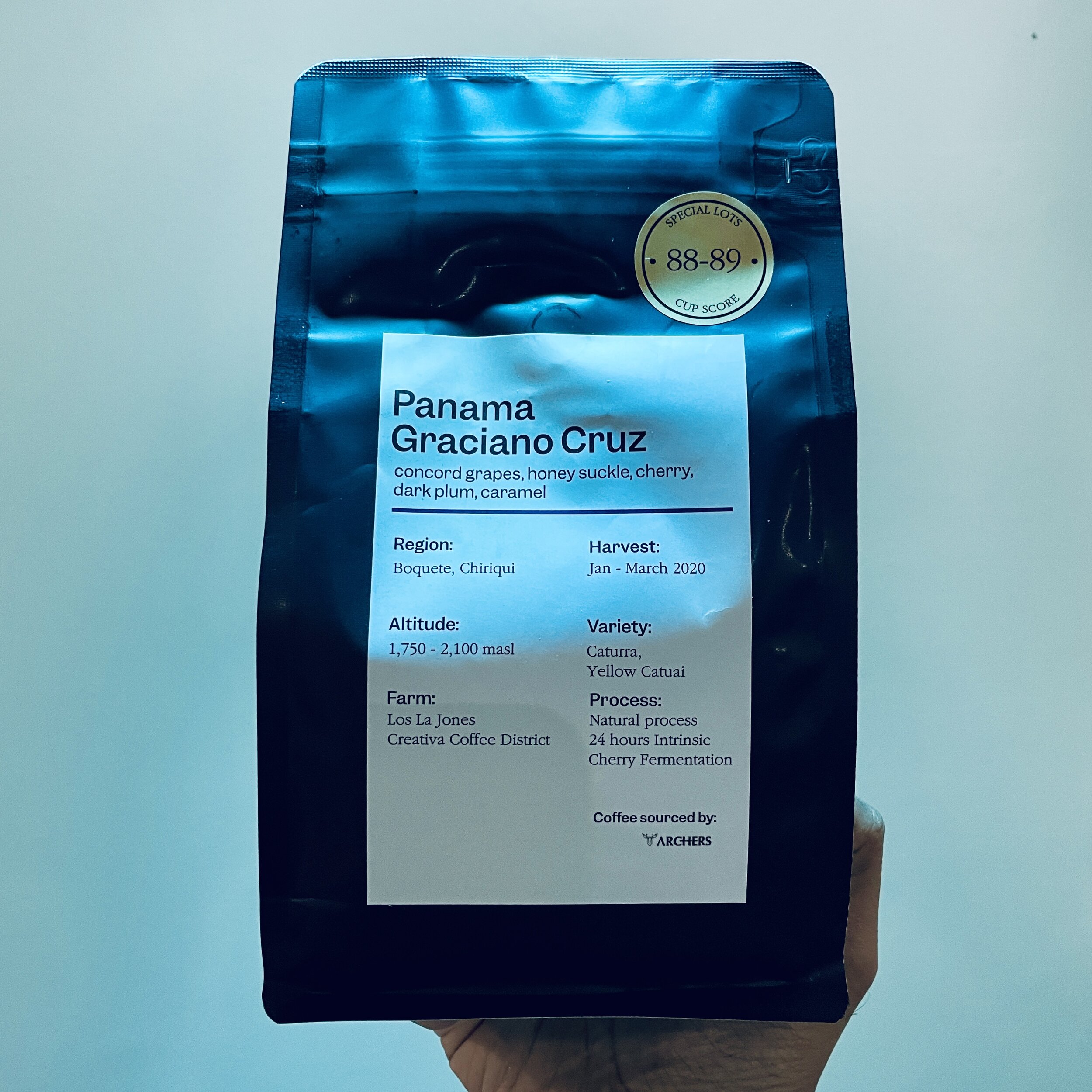What I’m Brewing: Ethiopia Halo Beriti and Panama Graciano Cruz by Archers
I knew Archers meant business when I first brewed their Costa Rica H17. This coffee was super complex and every time I changed my recipe, I got different taste notes. Green apple one time, and sweet and sour pineapple the other time. Was it my inability to brew consistently or was it just magic? Let’s go with the former because I love experimenting.
Coming to their espresso with milk, I can remember having an Ethiopian Cortado at Coffee Architecture and the classic Brazilian Flat White which is my regular at Hoof Cafe. I am guilty of not exploring their filter coffee more. The Ethiopian Anaerobic Halo Beriti was what I had brewed at Space Cup recently.
Brewing for the Baristas at Space Cup
Ethiopia Anaerobic Halo Beriti
Bought from Sippy Beans
Roast Level: Light-Medium
Origin: Ethiopia
Region: SSNP, Yirgacheffe
Producer: Various smallholders at Abeyot Ageze
Process: Natural, 65 hours anaerobic fermentation
Varietal: Heirloom
Altitude: 2040 masl
Taste notes: Floral, white peach, sweet pineapple, mango
Cup Score: 88-89
This coffee was not only bright but also sweet at the same time. This meant only one thing, I enjoyed the coffee and off it goes on my cart and straight to my doorstep. This is a naturally processed coffee that went through 65 hours of anaerobic fermentation. More about this process here.
You have the classic Ethiopian floral notes but largely overshadowed by the complimenting pineapple sweetness, bright acidity and medium body. The white floral aromatics during the bloom was exhilarating like a child watching fireworks for the first time.
One more coffee to pick and I couldn’t make up my mind, so I decided to try another origin by Archers. Tempted to pick up the Ethiopia Hamasho, but I want to give this origin a break for now.
The Panama Graciano Cruz stood out because it wasn’t a geisha. You must be thinking that I have lost my mind, but in fact, I don’t remember having anything from Panama other than a Geisha varietal.
Panama, Graciano Cruz
Bought from Sippy Beans
Roast Level: Medium
Origin: Panama
Region: Boquete, Chiriqui
Farm: Los La Jones, Creativa Coffee
Process: Natural - 24 hours Intrinsic Cherry fermentation
Varietal: Caturra & Yellow Catuai
Altitude: 1750 – 2100 masl
Tasting Notes: Concord Grapes, Honey Suckle, Cherry, Dark Plum, Caramel
Cup Score: 88-89
I’m quite speechless about this coffee really, the way these coffee are processed and fermented literally blow my mind. The acidity is not as pronounced as the Ethiopia, but it is a very clean, fruity coffee. It’s easy to tell apart the different notes, especially the sourness of the cherry and the sweet aftertaste of the ripe plums.
Creativa Coffee District calls this an Intrinsic Cherry process and they ferment the cherry in the same bag the coffee comes in. This way, each batch will be quite unique to the other. The process can last anywhere between 12 to 72 hours.
Nature is the captain of the fermentation ship here, processed in the open air environment maintaining the temperature around 30 degrees C. The cherries are monitored to make sure the ambient temperature doesn’t go over 45 degrees C to prevent overheating.
Creativa Coffee District is a modern state-of-the-art processing facility and has integrated art and specialty coffee in a unique and authentic space striving for innovation in new coffee production standards. This promotes higher income for growers and sustainable ecological practices for processing stations all over the world.
I enjoyed using the Chemex to brew them both. My recipe:
Coffee: 30g
Water: 400g
Temperature: 92 Degrees C
Grind: Medium to Medium Fine, 22 clicks on the Commandante
Ratio: 1:15
Total Brew Time: 3 to 3:15
Pour 100g of water, bloom for 30 seconds. I would go for roughly 3:1 water to coffee ratio for the bloom.
The next 3 pours will be 100g water each. You will aim for a total of 400g in approximately 3 minutes.
After the final pour, I’ll gently swirl the slurry 3 times to achieve even extraction levels and a nice level bed.
Pour gently and consistently in concentric circles, starting and ending my pour in the middle.
Read about other coffees on What I’m Brewing!
In short, it puts a smile on my face knowing that specialty coffee industry is in the forefront for innovation whilst also promoting sustainable agriculture and humane working conditions for our growers. I say “our” because I think its our responsibility to spread awareness about this.
Coffee has the potential to make huge changes in the way farmers are treated and paid. Standards, regulations and certifications such as the “fair trade” label are being issued in order to make sure good working conditions, environmental and production requirements are met.
It is also critical to point out that monitoring thousands of small farms become increasingly difficult and many loop holes can cause the system to fail. Can the solution lie in direct trade? I believe a dialogue starting with the roasters who source the coffee can shed some light to this complicated but much needed discussion. Yes, it’s work in progress.





